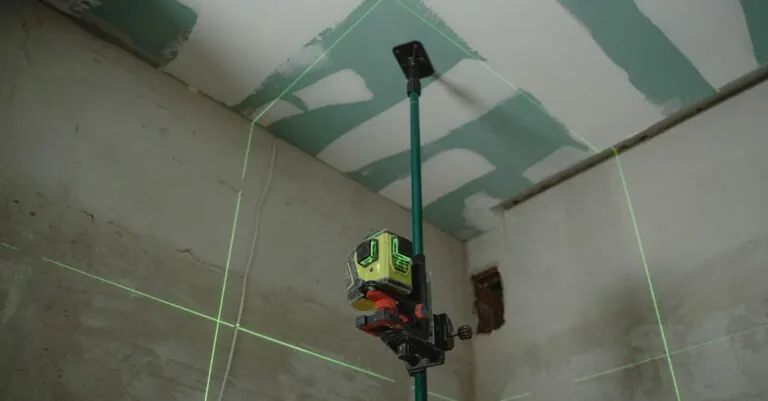Imagine this: you’re all set to tweak your RGB lighting and monitor your system’s performance, but the iCUE installation throws a tantrum. Frustrating, right? Don’t worry, you’re not alone in this digital drama. Many users find themselves wrestling with installation issues that feel like a bad soap opera plot twist.
Table of Contents
ToggleUnderstanding iCUE Installation Issues
Users frequently encounter various issues during the installation of iCUE software. These challenges may lead to frustrating experiences, impacting the use of RGB lighting and system performance monitoring.
Common Symptoms of Installation Problems
Installation problems commonly manifest in multiple ways. Users might notice error messages during the installation process. Incompatibility with system requirements sometimes becomes apparent. Performance issues could arise, causing the software to crash frequently. Unresponsive features become evident when attempting to customize settings, leading to dissatisfaction. Additionally, the software might fail to recognize connected devices, creating confusion.
Causes of iCUE Installation Failures
Several factors contribute to failures in installing iCUE. Outdated operating systems often lead to compatibility problems. Missing or corrupted files can disrupt the installation process significantly. Users may overlook administrative privileges that are necessary for a successful setup. Conflicts with existing software frequently result in unexpected errors. Malware or antivirus interference may block installation efforts, further complicating troubleshooting.
Step-by-Step Guide to Repair iCUE Installation
Repairing iCUE installation involves several specific steps. Following this guide aids in resolving common issues effectively.
Preliminary Checks Before Repair
Confirm system compatibility first. Ensure the operating system meets iCUE requirements. Check for any pending Windows updates, as these can affect software functionality. Verify that all connected devices are supported and functioning properly. Additionally, inspect for interference from antivirus or firewall settings. Disabling these temporarily can sometimes help in troubleshooting installation problems. Executing these preliminary checks saves time and reduces frustration during the repair process.
Repairing iCUE Installation through the Control Panel
Navigate to the Control Panel to begin repairs. Select “Programs and Features” to view installed applications. Locate the iCUE software in the list and click it. Choose “Repair” from the options available. This process initiates the repair utility, which scans for corrupted files and fixes them. After the repair process completes, restart the computer to apply any changes. Users often find this method effective in resolving issues without needing to uninstall the software completely.
Using iCUE Repair Tool
Downloading the iCUE Repair Tool provides an alternative repair option. Access the official Corsair website to retrieve the latest version. Once downloaded, run the tool to begin scanning for installation issues. The tool identifies and corrects problems automatically. Follow the on-screen prompts to complete the repair process. Employing this dedicated tool simplifies repairs and enhances the software’s performance. It offers a user-friendly experience specifically designed for resolving common iCUE installation problems.
Troubleshooting Common Issues
Users may encounter various problems when installing iCUE. Addressing these common issues can greatly enhance the software’s functionality.
Dealing with Driver Conflicts
Driver conflicts can obstruct the proper installation of iCUE. Ensure all device drivers are up to date. Check the manufacturer’s website for the latest versions. Uninstalling outdated or conflicting drivers may resolve the issue. Afterward, reboot the system to apply changes. Reinstall iCUE and check its performance. Users may also consider utilizing Device Manager to identify issues with drivers. Identifying and updating the problematic drivers can improve overall compatibility with iCUE.
Resolving Software Incompatibility
Software incompatibility frequently causes installation failures. Confirm that installed applications do not interfere with iCUE. Verify that the operating system meets all iCUE requirements. Run compatibility checks for existing software that may clash with iCUE. Removing or updating such applications often resolves conflicts. Performing a clean installation of iCUE, after uninstalling the conflicting software, may ensure smooth operation. Keeping all software updated reduces the chances of incompatibility issues in the future.
Preventing Future Installation Problems
Addressing installation issues proactively enhances the user experience with iCUE software. Implementing certain strategies can help prevent future complications.
Tips for Successful Installation
Confirming system requirements before installing software ensures compatibility. Using the latest version of iCUE from the official Corsair website reduces the chances of encountering bugs. Running the installer as an administrator can also circumvent installation problems related to permissions. Disconnecting unnecessary peripherals minimizes conflict during the setup process. Checking for updates on system drivers before installation keeps everything running smoothly.
Maintaining System Health for Optimal Performance
Regularly updating the operating system prevents compatibility issues with software. Performing routine malware scans protects against interference that could disrupt installations. Disk cleanup and defragmentation maintain system efficiency, promoting smoother performance. Keeping device drivers current ensures functionality with iCUE software. Utilizing system restore points allows easy recovery from changes that impact performance negatively.
Repairing iCUE installation doesn’t have to be a daunting task. By following the outlined steps and recommendations, users can effectively troubleshoot and resolve common installation issues. Ensuring system compatibility and keeping software updated are key factors in preventing future problems.
Utilizing the repair options available through the Control Panel or the official Corsair Repair Tool can streamline the process. With a little patience and attention to detail, users can enjoy a seamless experience with iCUE, enhancing both their RGB lighting and overall system performance.



